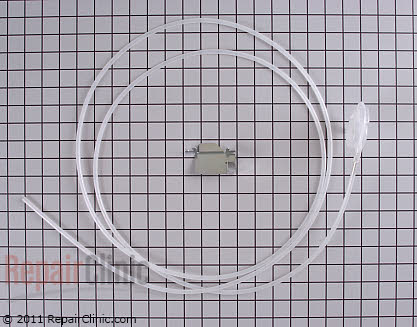The dispensers on some of these older Whirlpool-built refrigerators are famous for the annoying and potentially floor-damaging drip-drip-drip problem where water will continue to drip for some time after dispensing water. Changing the water inlet valve or checking house water pressure are probably wild goose chases on this one.
Turns out there’s a design flaw in these units that use a coil of tubing for the water “tank” inside the refrigerator. When water is dispensed, it’s immediately replaced by warmer water from outside the refrigerator. As the water cools, it expands. In the coiled-tube tank, there’s no place for it to expand except to force its way out the nozzle, much to the dismay of many owners of these refrigerators.
Fortunately, there is a fix and it’s not too bad of a spanking. You need to install this tubing kit, sometimes called “the slurp kit.”

The kit comes with instructions but they don’t apply to models made between 2000 and 2001. But not to worry, Grasshoppah, because the Samurai shall be your beacon of appliantological wisdom in this dark time of your appliance morass.
First, you’ll unsnap the dispenser frame off. Underneath the bottom edge of the frame, you will see two slots. Just take a flathead screwdriver and pop that plastic frame off, then you can get good access to it.

(click for larger view)
Depending your manual finesse level, you may need to remove the control bracket, called out in the diagram. The dispenser nozzle is also labelled in the diagram.
Next, drop down on your knees and pull the toe grill off. Undo the union connector behind the grill. Remove the nozzle retaining screw and pull the tubing up from the front dispenser.
When installing this new one, push the new tubing down through the channel hole that the old one was in all the way down. Then just get something small to fish up in the bottom of your door channel, like a stubby screwdriver or pocket screwdriver and pull the tubing down. Another pair of hands can save some adult language that might otherwise be forthcoming to push down on the tubing while you fish it through the bottom.
Don’t worry, I’ve changed lots of these and never even came close to breaking the line half way through the door when pull it out from the front dispenser.
To learn more about your refrigerator, or to order parts, click here.















